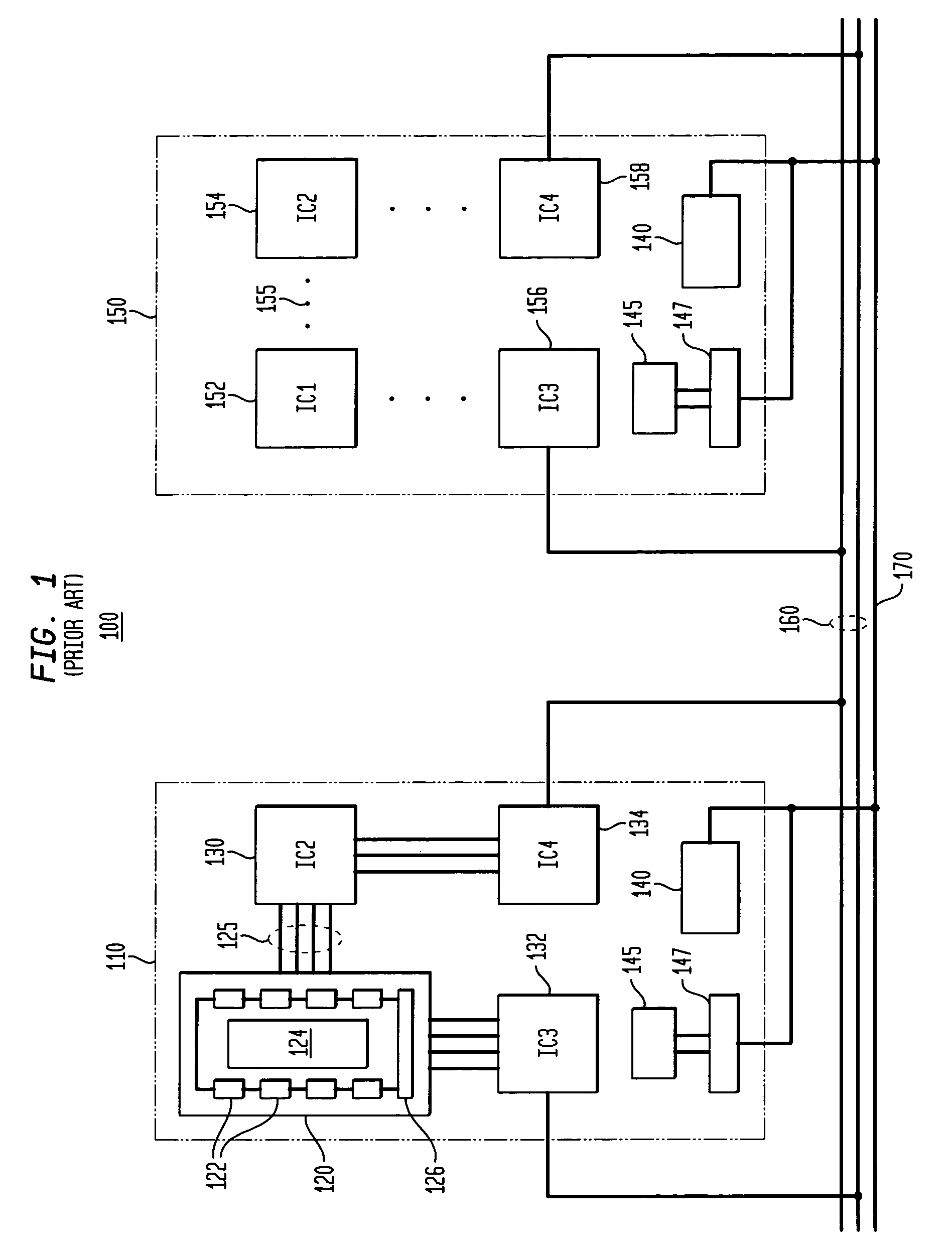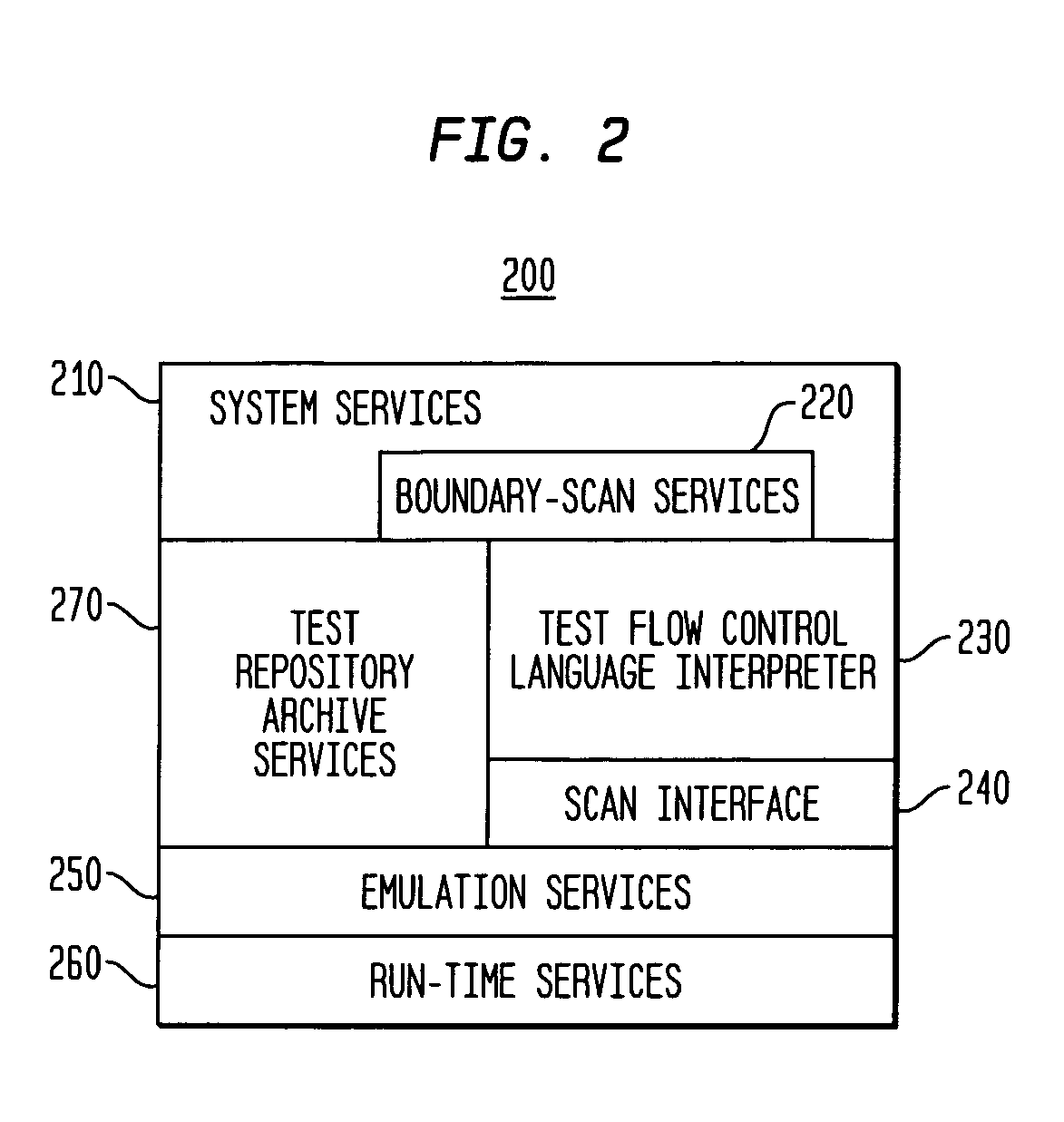System for flexible embedded Boundary Scan testing
a flexible, boundary scan technology, applied in the direction of instruments, computing, measurement devices, etc., can solve the problems of time-consuming and laborious process of altering such programs, unable to determine the functionality and continuity of electronic assemblies, and limited current methods
- Summary
- Abstract
- Description
- Claims
- Application Information
AI Technical Summary
Benefits of technology
Problems solved by technology
Method used
Image
Examples
Embodiment Construction
[0022]FIG. 1 illustrates a conventional Boundary Scan test system configuration 100 including details of both board and integrated circuit tests. More specifically, system 100 is composed of boards 110 and 150 communicating via bus 160. Board 110 includes a plurality of integrated circuits 120, 130, 132 and 134, which are in communication via interconnection tracks 125, for example. Board 150, similarly, includes a plurality of integrated circuits 152, 154, 156, and 158, in communication via interconnection tracks 155. Integrated circuit 120 illustrates a conventional Boundary Scan configuration wherein core logic 124 is surrounded on the boundary of integrated circuit 120 with programmable cells 122. Typically, the programmable cells 122 are “daisy-chained” together to allow data to be passed from one cell to the next. Test Access Port (TAP) controller 126 provides a control means to route serial input signals, i.e., Test Data In (TDI), for setting and clearing individual cells 122...
PUM
 Login to View More
Login to View More Abstract
Description
Claims
Application Information
 Login to View More
Login to View More - R&D
- Intellectual Property
- Life Sciences
- Materials
- Tech Scout
- Unparalleled Data Quality
- Higher Quality Content
- 60% Fewer Hallucinations
Browse by: Latest US Patents, China's latest patents, Technical Efficacy Thesaurus, Application Domain, Technology Topic, Popular Technical Reports.
© 2025 PatSnap. All rights reserved.Legal|Privacy policy|Modern Slavery Act Transparency Statement|Sitemap|About US| Contact US: help@patsnap.com



